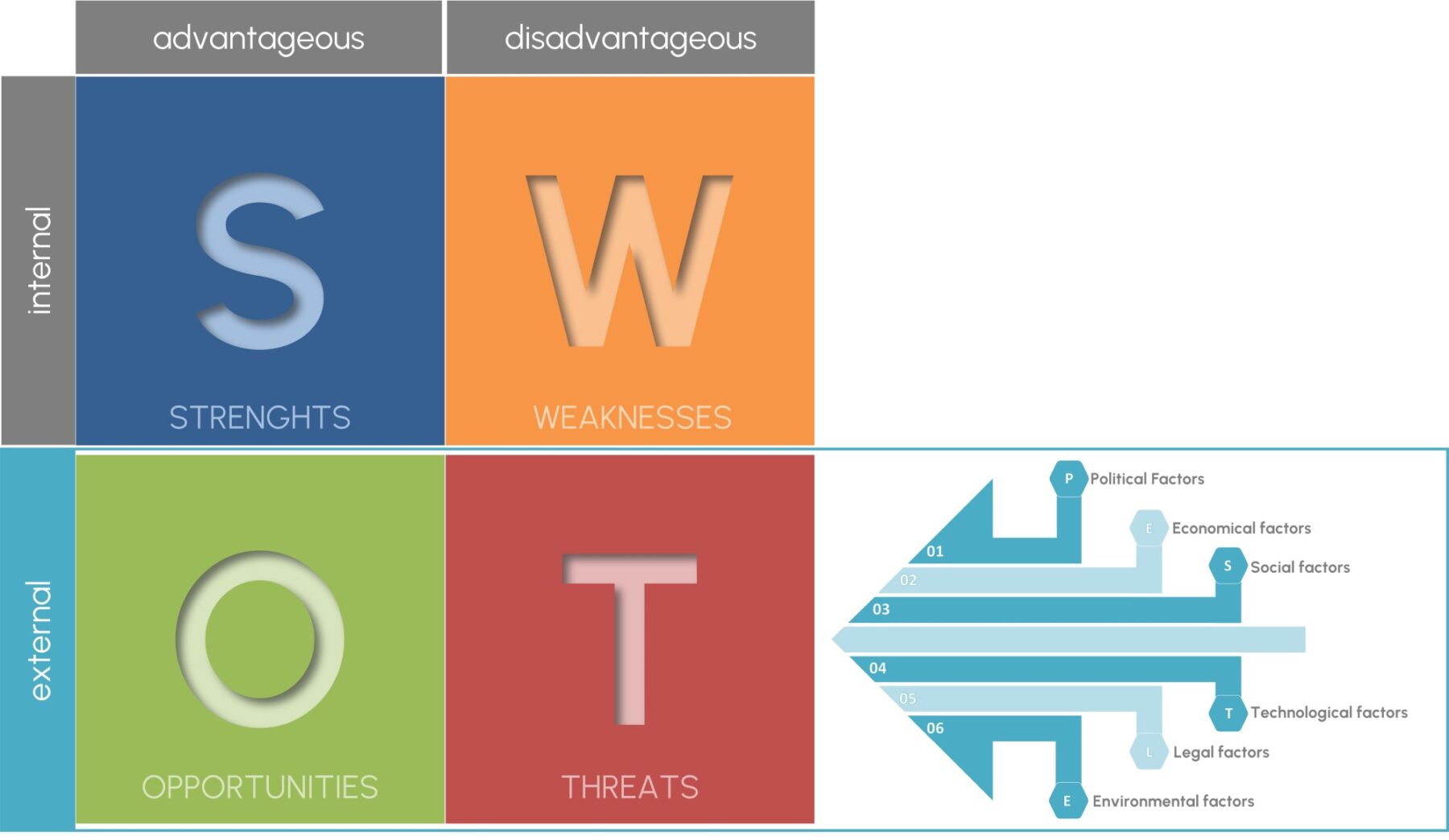Analysis of the context of your organisation – how does it work?
ISO management standards based on the High-Level Structure require that an organisation first makes an analysis of its internal and external context and then defines the plan for achieving its goals. The combination of a SWOT and a PESTLE analysis is a good method for carrying out this activity.

Context analysis is a method of examining the internal and external business environment of an organisation. The aim is to supply a better understanding of the issues affecting the organisation. These insights are useful for developing a proactive plan that is in line with the organisation’s objectives.
PESTLE is a tool for understanding the main forces influencing an organisation. Imagine that the organisation is a sailboat. The external forces, such as the current, wind and other weather conditions, make it easier or harder to reach the destination. The captain takes this into account when plotting the course. In the same way, PESTLE is an important navigation tool for your organisation to think about its future and plan how to complete it. The forces are divided into six types: Political, Economic, Socio-demographic, Technological, Legal and Environmental, from which PESTLE is derived.
A SWOT analysis helps organisations to discover what they are good at and what they can improve, both from an internal and an external perspective. SWOT stands for strengths, weaknesses, opportunities, and threats. The internal point of view concerns the strengths and weaknesses and are the things that the organisation can control. The external viewpoint is about the opportunities and threats that the organisation cannot control but can use or limit. By performing a PESTLE analysis before the SWOT, the results of the PESTLE analysis can be used to show the opportunities and threats in the SWOT in a more focused way.
In this blog, we describe the SWOT analysis to generate insights for future strategy. In an earlier blog, we discussed the balanced scorecard as a tool for strategy execution. So why not already use the dimensions of the BSC (balanced scorecard) during the SWOT analysis? The approach stays the same, but instead of the general question “What are our weaknesses?”, we now convert it into “What are our weaknesses in the context of the perspectives of finance, customers, internal business processes and organisational capability?”. We do the same for the strengths, opportunities, and risks. In this way, we bring the results of the SWOT analysis one step closer to the strategy map.
The next step is to look at your SWOT matrix for connections. Do some of your strengths naturally support the identified opportunities? If you end the weaknesses, will you create more opportunities? Your ideas on how to use your strengths and overcome your weaknesses should inspire your plan
A well-done SWOT/PESTLE analysis is a valuable tool in your toolbox to improve business performance and reduce threats and weaknesses in the future. It can also encourage your company to renew its plan – innovative ideas may appear that you would not have thought of if you had not looked at the company from all sides.
In conclusion, the SWOT analysis is a simple but relatively complete tool for preparing a business plan, especially when complemented by the PESTLE analysis. There are other tools that can be considered to complement the SWOT, such as the MOST analysis (Mission, Objectives, Strategies and Tactics) and the SCRS analysis (Strategy, Current State, Requirements and Solution), which we will talk more about in other articles.
If you need guidance on this process, please contact us. We will be happy to help you.

